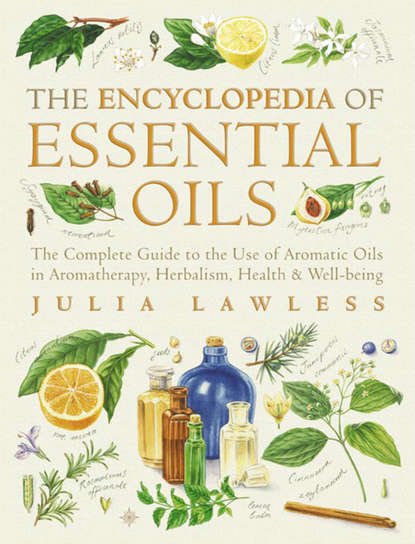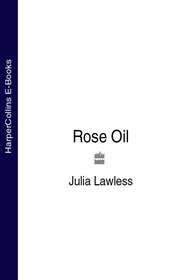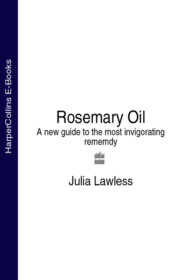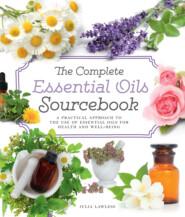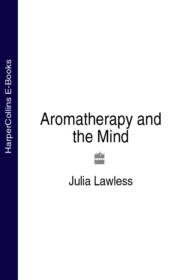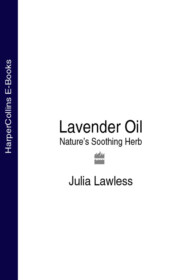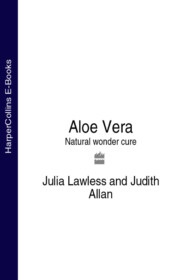По всем вопросам обращайтесь на: info@litportal.ru
(©) 2003-2024.
✖
Encyclopedia of Essential Oils: The complete guide to the use of aromatic oils in aromatherapy, herbalism, health and well-being.
Настройки чтения
Размер шрифта
Высота строк
Поля
Absolutes are usually highly concentrated viscous liquids, but they can in some cases be solid or semi-solid (clary sage absolute). In recent years, much research has been devoted to the extraction of essential oils and aromatic materials using liquid carbon dioxide; oils produced in this manner are of excellent odour quality and are entirely free of unwanted solvent residues or non-volatile matter.
Pomades
True pomades are the products of a process known as enfleurage, which is virtually obsolete today. This was once the principal method for obtaining aromatic materials from flowers that continued to produce perfume long after they were cut. A glass plate was covered in a thin coating of specially prepared and odourless fat, called a chassis. The freshly cut flowers, such as jasmine or tuberose, were individually laid in the fat which became saturated with their volatile oils. The chassis would be frequently renewed with fresh material throughout the harvest. Eventually the fragrance-saturated fat, known as pomade, would be treated by extraction with alcohol to produce the pure absolute or perfume.
Periods of the year for the treatment of various flowers once grown in Provence, France
Natural versus ‘Nature Identical’ (#ulink_57dadb8b-1bf2-5aa6-b044-4520a59302fe)
Many perfumes or oils, once obtained from flowers such as carnation, gardenia and lilac, are nowadays produced almost entirely synthetically. In the pharmaceutical industry these chemically constructed products are called ‘nature identical’. The perfumery and flavouring industries require continuity in their products and naturally occurring substances are always subject to change, due to seasonal conditions. However, the so-called ‘nature identical’ products and the naturally occurring essential oils are of an entirely different character, which is reflected in their relative costs – the synthetic types being much cheaper to produce than the genuine ones. Many aromatic oils, such as lavender or geranium, contain a relatively small number of major constituents, several minor constituents and also a very large number of trace elements. To reconstruct such a complex combination of components including all the trace elements, would be virtually impossible. Most ‘nature identical’ oils are said to be only about 96 per cent pure or accurate, yet it is the remaining 4 per cent, the trace elements, that often really define a particular fragrance. Such is the case with galbanum oil where the pyrazines, present at rather less than 0.1 per cent, are responsible for the powerful green odour of the oil.
It is also the specific combination of constituents in a real essential oil, including the trace elements, which give it value therapeutically. The reason for this might be that these minute amounts of trace elements have a synergistic or controlling effect on the main ones. For example, there are over 300 different constituents in rose, some of which have not yet been identified, which is why synthetic rose oil is unconvincing. ‘Nature identical’ oils cannot be used therapeutically as substitutes for the naturally occurring aromatic materials, not only because the subtle balance of constituents is lost but also because they lack the vital ‘life force’ of oils of natural origin.
Part II THE OILS (#ulink_9e62941a-ce81-5081-aa6c-02487dd41ff0)
A
AJOWAN (#ulink_0a090c59-c4e3-5f01-a23d-a67b680a0e48)
Trachyspermum copticum
FAMILY Apiaceae (Umbelliferae)
SYNONYMST. ammi, Ammi copticum, Carum ajowan, C. copticum, Ptychotis ajowan, ajuan, omum.
GENERAL DESCRIPTION An annual herb with a greyish-brown seed, which resembles parsley in appearance.
DISTRIBUTION Chiefly India, also Afghanistan, Egypt, the West Indies and the Seychelle Islands.
OTHER SPECIES see Botanical Classification (#litres_trial_promo) section.
HERBAL/FOLK TRADITION The seeds are used extensively in curry powders and as a general household remedy for intestinal problems. The tincture, essential oil and ‘thymol’ are used in Indian medicine, particularly for cholera.
ACTIONS Powerful antiseptic and germicide, carminative.
EXTRACTION Essential oil by steam distillation from the seed.
CHARACTERISTICS A yellow-orange or reddish liquid with a herbaceous-spicy medicinal odour, much like thyme.
PRINCIPAL CONSTITUENTS Thymol, pinene, cymene, dipentene, terpinene and carvacrol, among others.
SAFETY DATA Possible mucous membrane and dermal irritant. Due to high thymol level, should be avoided in pregnancy. Toxicity levels are unknown.
AROMATHERAPY/HOME USE Not recommended.
OTHER USES It has been used extensively for the isolation of thymol, but this has largely been replaced by synthetic thymol.
ALLSPICE (#ulink_f7b6a29a-44d5-5ef3-a6e2-5551f6625e1a)
Pimenta dioica
FAMILY Myrtaceae
SYNONYMSP. officinalis, pimento, pimenta, Jamaica pepper.
GENERAL DESCRIPTION An evergreen tree which reaches about 10 metres high and begins to produce fruit in its third year. Each fruit contains two kidney-shaped green seeds which turn glossy black upon ripening.
DISTRIBUTION Indigenous to the West Indies and South America, it is cultivated extensively in Jamaica, Cuba and, to a lesser degree, in Central America. Imported berries are distilled in Europe and America.
OTHER SPECIES Four other varieties of pimento are found in Venezuela, Guyana and the West Indies which are used locally as spices.
HERBAL/FOLK TRADITION Used for flatulent indigestion and externally for neuralgic or rheumatic pain. Pimento water is used as a vehicle for medicines which ease dyspepsia and constipation since it helps prevent griping pains. It is used extensively as a domestic spice – allspice is so called because it tastes like a combination of cloves, juniper berries, cinnamon and pepper.
ACTIONS Anaesthetic, analgesic, anti-oxidant, antiseptic, carminative, muscle relaxant, rubefacient, stimulant, tonic.
EXTRACTION Essential oil by steam distillation from 1. the leaves, and 2. the fruit. The green unripe berries contain more oil than the ripe berries, but the largest percentage of oil is contained in the shell of the fruit. An oleoresin from the berries is also produced in small quantities.
CHARACTERISTICS 1. Pimenta leaf oil is a yellowish-red or brownish liquid with a powerful sweet-spicy scent, similar to cloves. 2. Pimenta berry oil is a pale yellow liquid with a sweet warm balsamic-spicy bodynote (middle note) and fresh, clean top note. It blends well with ginger, geranium, lavender, opopanax, labdanum, ylang ylang, patchouli, neroli, oriental and spicy bases.
PRINCIPAL CONSTITUENTS Mainly eugenol, less in the fruit (60–80 per cent) than in the leaves (up to 96 per cent), also methyl eugenol, cineol, phellandrene and cryophyllene among others.
SAFETY DATA Eugenol irritates the mucous membranes, and has been found to cause dermal irritation. Pimenta leaf and berry oil should therefore be used with care in low dilutions only.
AROMATHERAPY/HOME USECirculation, muscles and joints: Arthritis, fatigue, muscle cramp, rheumatism, stiffness etc. ‘Used in tiny amounts … in a massage oil for chest infections, for severe muscle spasm to restore mobility quickly, or where extreme cold is experienced.’
Respiratory System: Chills, congested coughs, bronchitis.
Digestive System: Cramp, flatulence, indigestion, nausea.
Nervous System: Depression, nervous exhaustion, neuralgia, tension and stress.
OTHER USES Used in aromatic carminative medicines; as a fragrance component in cosmetics and perfumes, especially soaps, aftershaves, spicy and oriental fragrances. Both leaf and berry oil are used extensively for flavouring foods, especially savoury and frozen foods, as well as alcoholic and soft drinks.
ALMOND, BITTER (#ulink_f151b97e-75a9-50e0-88d1-ef5c69302a2f)
Prunus dulcis var. amara
FAMILY Rosaceae
SYNONYMSP. amygdalus var. amara, Amygdalus communis var. amara, A. dulcis, P. communis.
GENERAL DESCRIPTION The almond tree grows to a height of about 7 metres and is popular as a garden tree due to its pinky-white blossom. It is botanically classified as a drupe.
DISTRIBUTION Native to Western Asia and North Africa, it is now extensively cultivated throughout the Mediterranean region, Israel and California.
Almond Tree
OTHER SPECIES There are two main types of almond tree – bitter and sweet. The sweet almond does not produce any essential oil.





